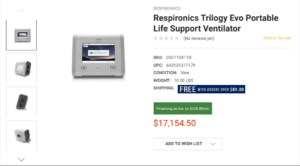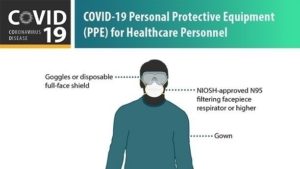Note: As of writing this, we currently have 270,062 confirmed COVID-19 cases and 6,927 deaths.
As I’m sure you’re aware, our president hasn’t been handling the whole coronavirus situation very well. From stating that the warmer weather of April has a negative effect on the virus, to suggesting Governor Cuomo established death panels.
So, while the media is foaming at the mouth over Trump, there’s a lot going on behind the scenes that truly matters to us. For instance, did you know that the US was actually already in the process of creating a (taxpayer funded) stockpile of ventilators, or we’re pretty much already past the point of no return as far as obtaining enough PPE, or that as a result of this pandemic, health insurance premiums could increase anywhere from 20-40% next year? But, as the media elite is busy getting their rocks off at the sound of Andrew Cuomo’s voice, there’s some other very important things that need to be discussed.
Let’s start with this story from ProPublica. In 2015, the US Department of Health and Human Services placed an order with a domestic company for $13.8 million. The contract called for a smaller, portable ventilator. This company, a subsidiary of the Dutch Royal Philips N.V., instead started selling higher priced versions of the ventilator around the world. The order called for 10,000 of the new Trilogy Evo Universal ventilators at $3,280 each from Philips. But, instead of HHS obtaining these crucial ventilators, Philips were selling the higher priced versions from between $12,495 and $17,154.

While the Trump administration could have easily ordered companies to start producing the Trilogy Evo Universal, they instead went to GM with a different company’s ventilator. The Trump administration, nor HHS, ever explains why, but an HHS spokeswoman did tell ProPublica that Philips had agreed to produce the ventilators “as soon as possible”, but that was not expected to begin any time this year. While this alone sounds egregious, the piece goes on even more crazy twists and turns. I highly suggest you read the whole thing.
Now that we’re in full swing COVID-19 remediation mode, the biggest need (outside of ventilators) around the country is PPE. Unfortunately, as pointed out by Dr. Michael Osterholm in a New York Times opinion piece, shortages of PPE will only be getting worse (not better) as time goes by. Due to the sheer demand and lack of planning, obtaining enough materials and equipment to adequately stock each hospital is simply unattainable.

Through the use of the Defense Production Act, the US could order companies to produce whatever needed, instead of their normal products, but the logistics of doing so means that we’d be weeks away from seeing those products. And if you take a giant company like 3M who was already producing up to 15 million N-95 masks per month, that’s still nowhere near enough.
To put this in perspective, in February a single New York hospital burned through over 2 million masks. And keep in mind this was before the massive surge of patients. So, to expect us to be able to produce enough equipment in such a short timeframe is just out of the question. Instead, Dr. Osterholm suggests that hospitals need to be following the CDC guidelines for extending/reusing N95 masks.
This is even more exacerbated by findings that suggest up to 64% surgical staff end up hoarding supplies due to waste and overuse of supplies. The main thing we need to take from this is that this issue is just going to be a constant and there’s nothing we can do about it at this time. Moving forward, the US will have to make better preparations for national crises such as these. If we keep focusing on issues that are already out of our control, we take resources away from actually getting through this.
Finally, we all know how seedy private insurance companies can be. But, how will they react when, due to the pandemic, they may spend as much as $251 billion from COVID-19 related costs. This could in turn see a rise in premiums of up to 40%!
In essence, because no insurance provider, or state ever planned for such a crisis, no one set aside any ’emergency funds’ for this type of situation. And obviously, they will want to make their money back, so we should expect to see our insurance premiums to rise next year. It’s certainly possible that congress could approve another stimulus package to alleviate some of this, but I’d say that it’s pretty much a guarantee that the money grabbing insurance industry will try to bleed out every cent from the working class people as possible.
Now, I know all of this sounds a bit grim. But, that’s the nature of a full-on pandemic. Things will be crazy for quite some time. But there are some things that we can do as individuals that will truly make an impact. First, this would be a great time to donate blood if you’re able to travel safely (please avoid mass transit). You can either visit the Red Cross site or find a local blood donation center. Second, if you are in a place where you would be able, please consider a monetary donation to a local shelter. If you’re in the Columbia, SC area, I highly suggest the Epworth Children’s Home. This must be an especially trying time for kids who are not with their families. Epworth is accepting either financial contributions or items purchased online from their wish list and shipped directly to them.
Also, I implore you to look through all the smoke that the media keeps putting up. Think about what all of this will actually mean to us average Americans and how our day to day lives are actually being impacted. Does Trump saying that governors need to be nice to him really impact our daily lives? Of course not! But the actual ramifications of such a catastrophe will likely carry on for years in ways that we haven’t even begun to imagine yet.





